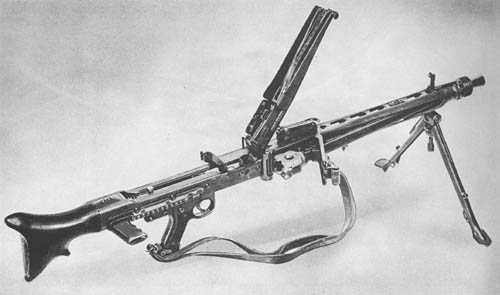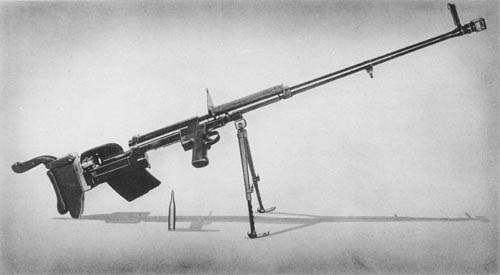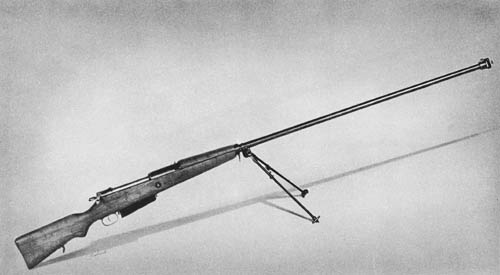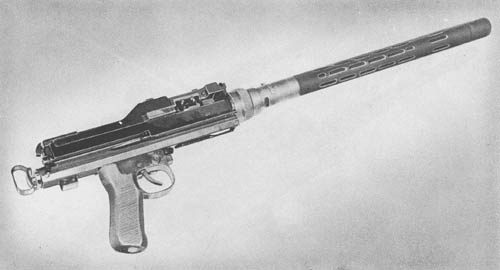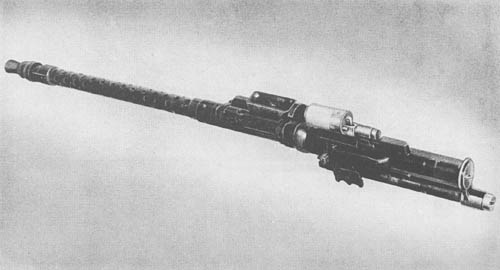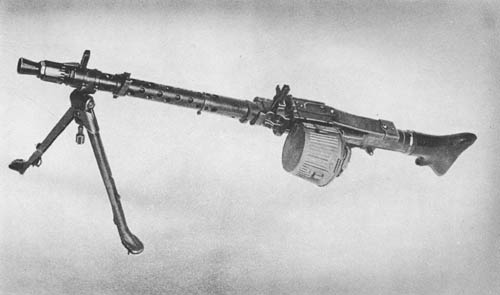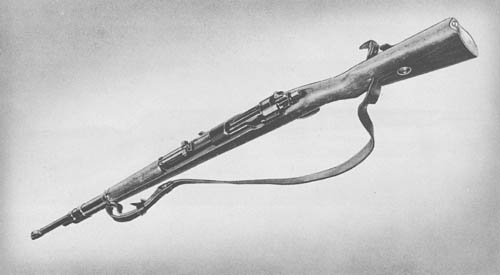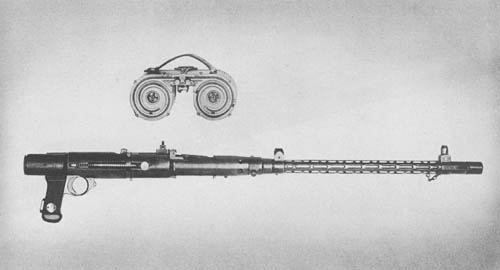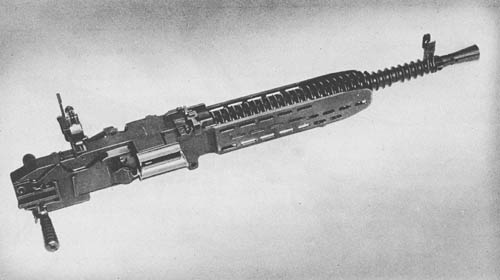
The M.G. 37 (t), 7.92 mm machine gun is one of the weapons taken over by the Germans after the occupation of Czech territory. It is gas-operated, belt-fed, air-cooled, and has a flexible mount.
The M.G. 37 has been designed for use on tanks and other Armored Force vehicles, but it is also effective as a heavy ground machine gun when mounted on a tripod.
The firing-control mechanism used in this weapon is different from that in other tank-mounted guns. Adjustments can be made for rapid and slow fire by use of a pivoting buffer system, and full-automatic or semi-automatic fire by use of an indicator on the trigger casing. A buffer is used to reduce the shock of the recoiling parts, and to insure smoother action. Initial cocking is accomplished by moving the cocking slide forward, the sear in this gun being moved to the front. By moving forward instead of to the rear, the type of cocking in this weapon makes it more adaptable for use in confined spaces such as tanks or other vehicles.
The weapon, being of Czech origin, uses an action similar to that of such guns as the Czech ZB, the Bren, and the British Besa. It is possible to change the barrel very easily on this weapon, although it is not a quick-change barrel. The gun does not have to be dismounted when this change is made.
SPECIFICATIONS
| Caliber | 7.92 mm (.312 in.) | |
| Weight | 45 lb., 10 oz. | |
| Length | 43 1/2 ins. | |
| Weight of barrel | 14 lb., 14 oz. | |
| Length of barrel | 28 7/8 ins. | |
| Operation | Gas-operated | |
| Feed | Belt-fed | |
| Rate of fire | 520 rds./min.—slow 820 rds./min.—fast |
German: p. 216
